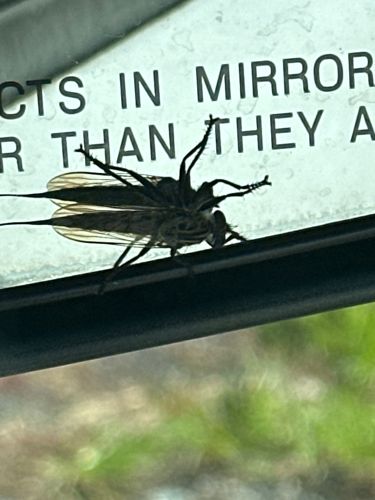Robber Fly
Scientific Name: Asilidae (family)
Order & Family: Order: Diptera, Family: Asilidae
Size: Species within the Asilidae family vary considerably in size, ranging from small species around 5 mm (0.2 inches) to very large species exceeding 50 mm (2 inches) in length.

Natural Habitat
Robber flies are found in a wide range of habitats, including grasslands, forests, deserts, agricultural fields, and suburban gardens. They often prefer open, sunny areas with good perching sites, such as exposed branches, rocks, or fence posts.
Diet & Feeding
Robber flies are predatory insects. Both adults and larvae are carnivorous. Adults feed on a wide variety of other insects, including flies, bees, wasps, beetles, butterflies, moths, and even other robber flies. Larvae typically feed on beetle larvae and other soil-dwelling insects.
Behavior Patterns
Robber flies are ambush predators, often perching in open, sunny areas waiting for prey to fly by. They are very agile flyers and can catch other insects in mid-air. Mating often occurs in mid-flight or on vegetation. Larvae live in soil or decaying wood and prey on other insect larvae.
Risks & Benefits
Risks: Robber flies can bite humans if handled, though this is rare and usually occurs when they are provoked. The bite is painful but not venomous and typically results in a minor welt. Benefits: They are highly beneficial insects in controlling populations of various insect pests, including agricultural pests. They are important predators in many ecosystems, contributing to natural pest control.
Identified on: 8/14/2025